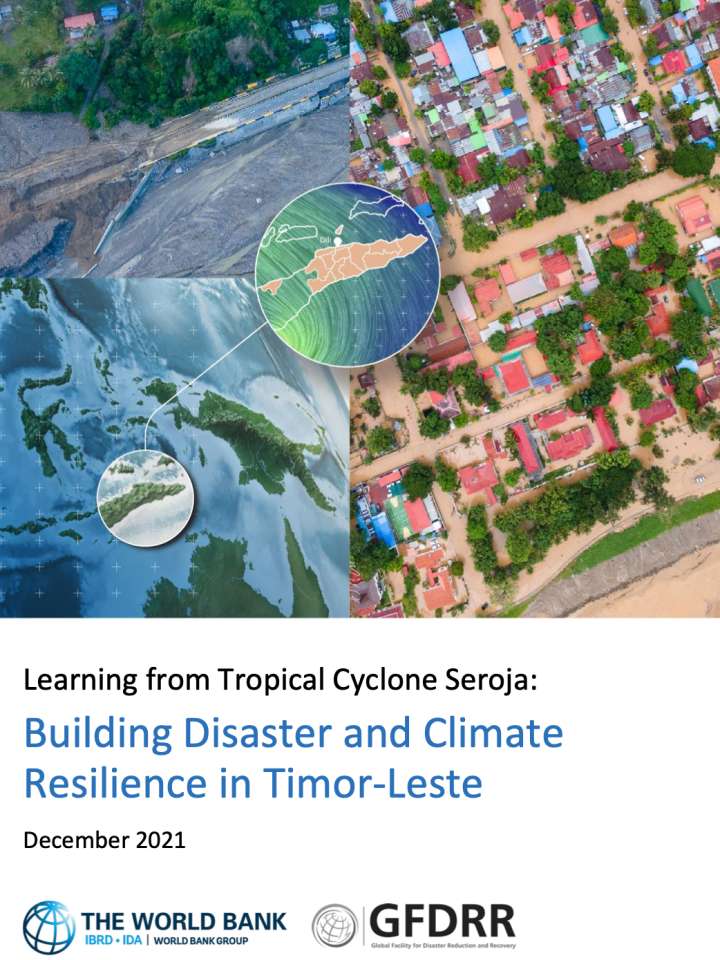Learning from tropical cyclone Seroja: Building disaster and climate resilience in Timor-Leste
This report is part of the World Bank’s response to the Government’s request for support in assessing damages as well as longer-term implications for disaster risk management. Tropical Cyclone (TC) Seroja impacted Timor-Leste with heavy torrential rains over a 24-hour period on April 4, 2021, with an average intensity of over 14 millimeters per hour and a peak intensity of over 70 millimeters per hour. The heavy precipitation and the country’s natural topography led to flash floods, landslides, and liquefaction, causing significant damage. The disaster affected all 13 municipalities of Timor-Leste, caused at least 44 fatalities, damaged critical infrastructure such as roads, bridges, water supply infrastructure, schools, and health facilities, and impacted rural areas and agricultural assets.
This report serves as inputs to a more detailed Post-Disaster Needs Assessment (PDNA) under development and could inform the methodology of future similar remote-based assessments. It is also a contribution to the policy dialogue with the Governmentand its partners about how to plan and invest more effectively to mitigate disasters in the future.
Explore further
